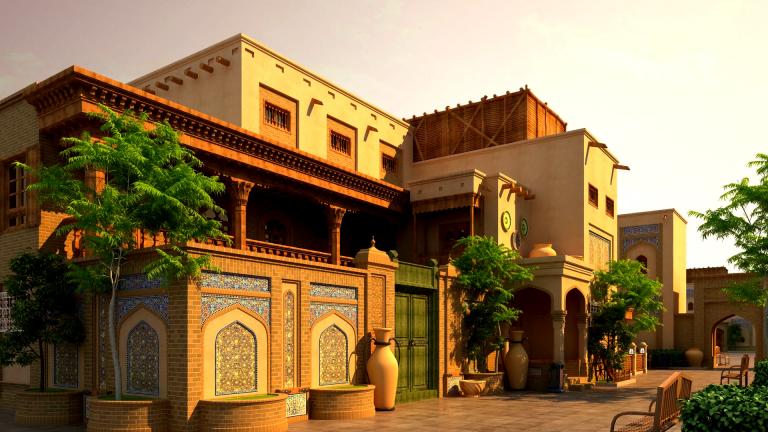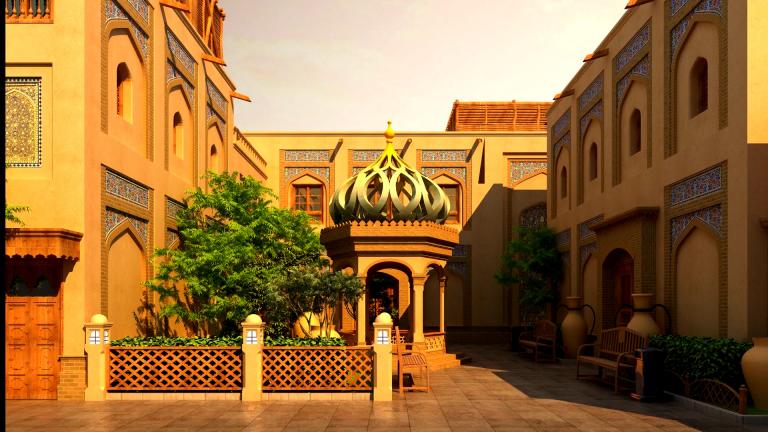Uighur Architecture
3 min readThe architecture of China’s Uighur ethnic group is part of the Islamic architectural tradition. It has extensive influences from Central and western asia .
Islam was founded in the 7th century AD, during China’s early Tang Dynasty(618-907 AD). It was rapidly introduced to China via marine trade routes. During the Song-Yuan period (960-1368 AD), mosques were built along China’s southeastern coast by merchants from Central and Western Asia During the Ming Dynasty(1368-1644 AD), Islam was introduced to via overland routes to Xinjiang in western China, where it was embraced by the Uighur ethnic group. almost every town in the region has a mosque. Mosques are not designed to be symmetrical, but they must face east so the faithful may ace Mecca when they pray.

Kashgar is the westernmost city in China, and was the first city in Xinjiang to accept Islam. Id Kah Mosque(construction started c pre-15th century current structure constructed c late 19th century) in Kashgar is China’s largest mosque. It faces east with the main entrance at the southeast corner. Theentryway is made of brick, with an arched entrance in the center The walls on either side connect to two corner minarets topped with small domes and spires. The wall to the right of the door(facing in) is fairly short, and the corner minaret is relatively large in circumference. The wall to the left of the door (facing in) is longer, and its corner minaret is relatively slender This contrast creates a sense of asym metrical balance with the offset entryway .
The afaq khoja Mausoleum (construction started c. post-mid 17th century) outside of Kashgar is one of China’s most famous Muslim tombs, as well as the largest Islamic architectural complex. The Tomb Hall is a very beautiful building approximately square in shape, surrounded by brick walls. Dome topped minarets rise from each corner. A large dome in the center is topped with a small domed minaret. The tall rectangular entryway is in the center of the south side, rising prominently above the walls. The small domes and pointed arches harmoniously set off the large central dome. The structureis elegant and solid, its symmetrical proportions creating a sense of solemn tranquility. The entireouter surface of the structure is faced with deep green and light blue glazed brick and ceramic tile Tomb Hall, Afaq Khoja Mausoleum, Kashgar, Xinjiang Autonomous Region The Emin Mosque in Turfan, Xinjiang Autonomous Region(construction started 1778 AD) is another famous example of Uighur architecture. The most striking feature of the mosque is the tall brick minaret that towers next to one ofits corners. The Emin Minaret is conical, rising in a simple, tapered line from a broad base to slender rounded tip .
The exterior is made of courses of recessed and protruding brick laid in a dozen different patterns The effect is both simple and natural. The tall rectangular entryway outside the mosque contains a recessed pointed-arch entrance, flanked by smaller arched niches. The minaret and walls are all con structed out of local sand-colored brick, blending seamlessly with the surrounding yellow loess terrain.









